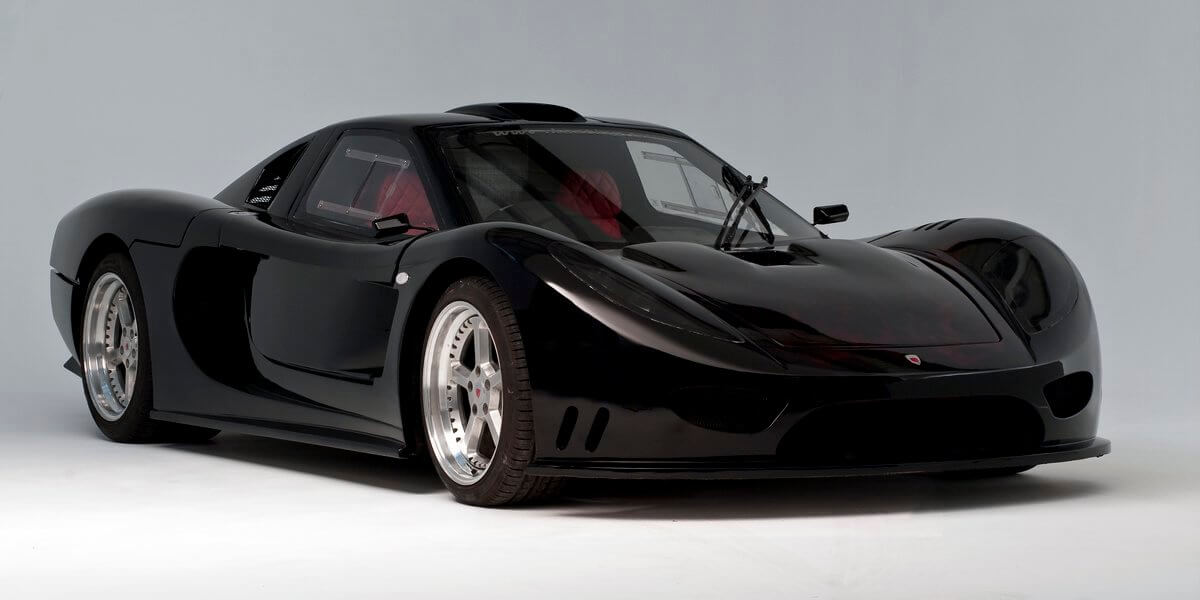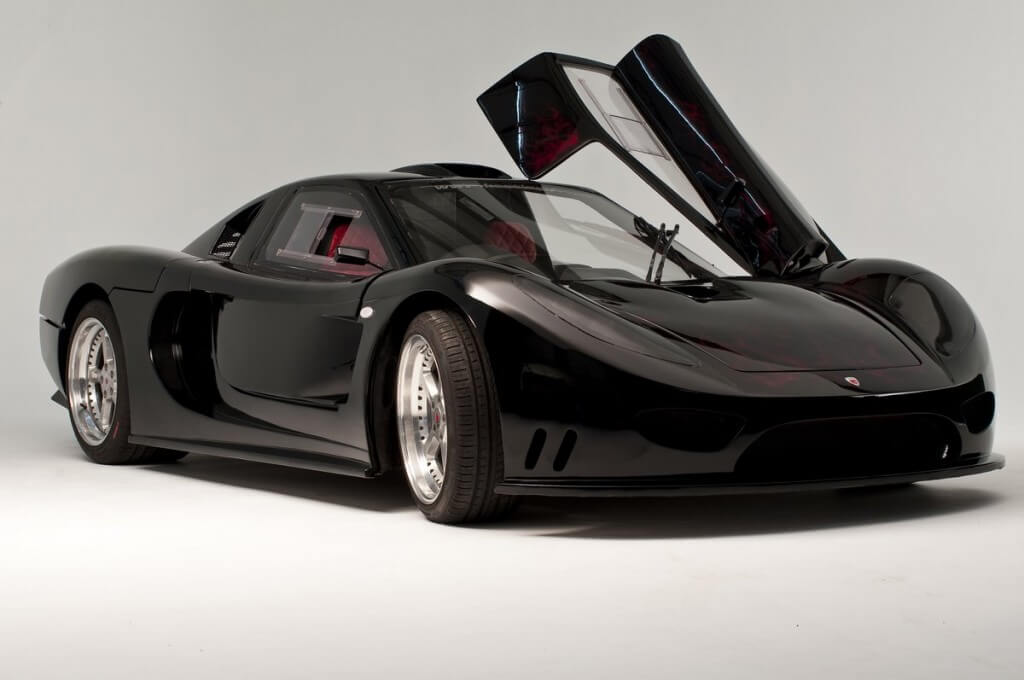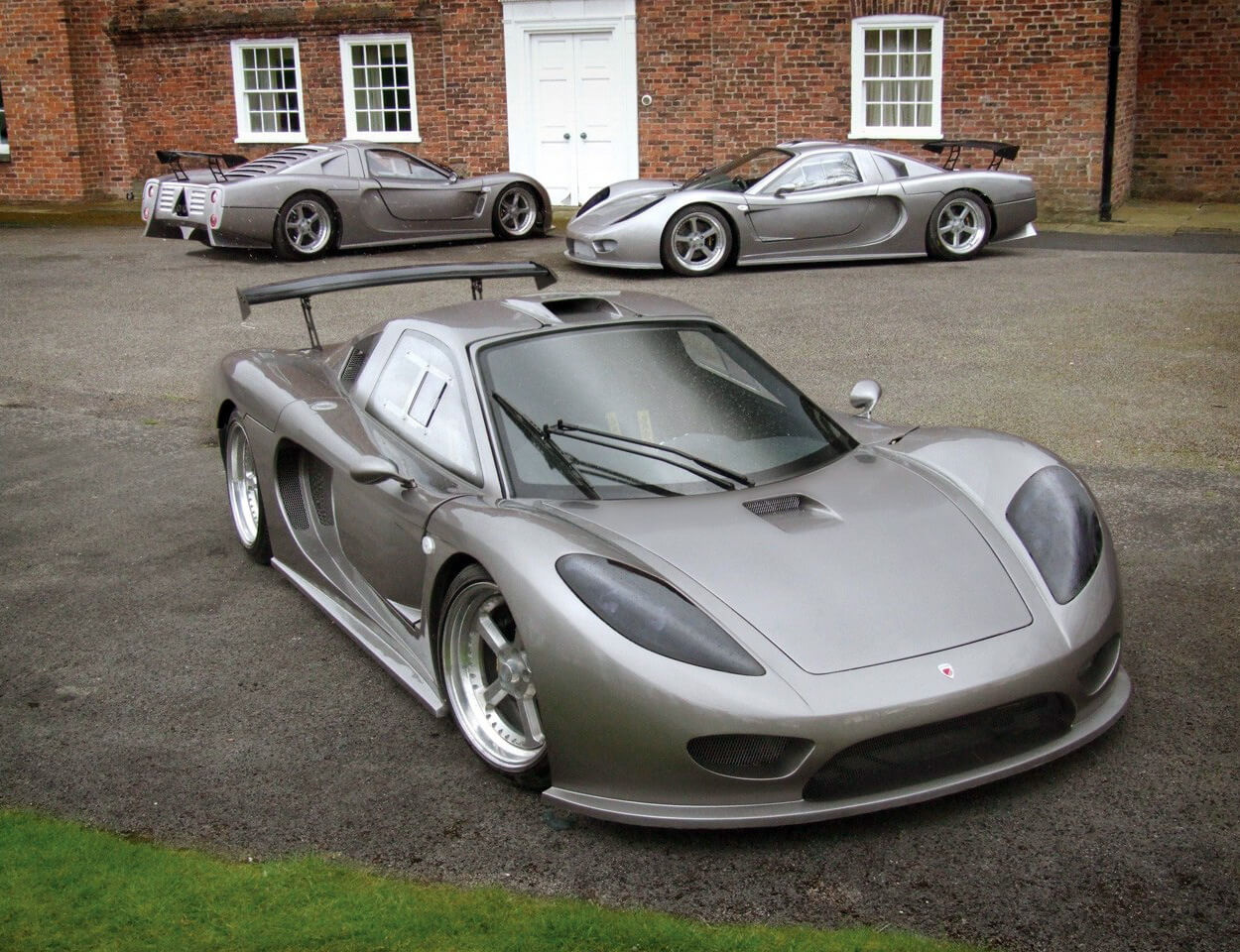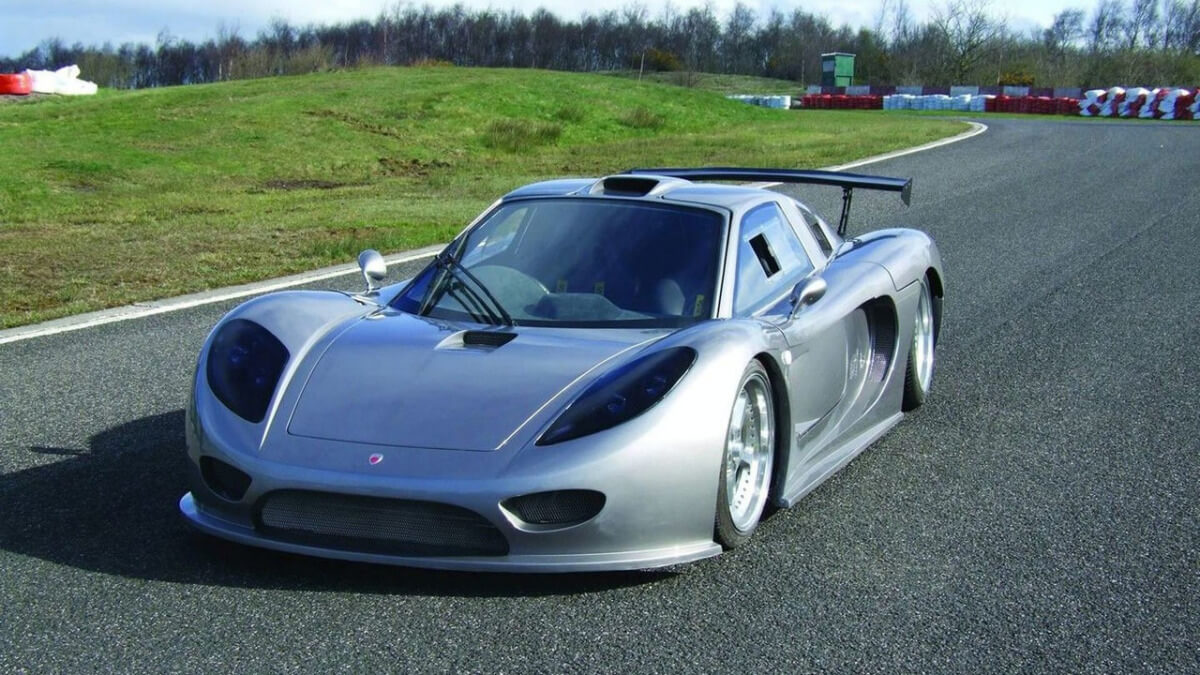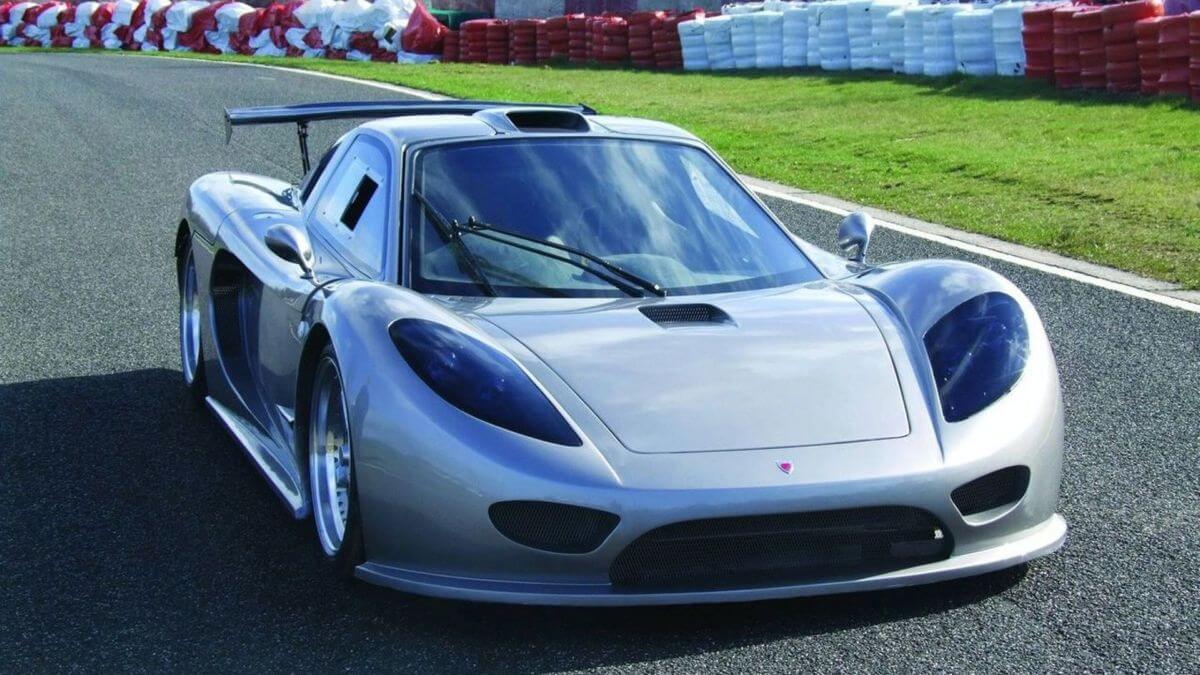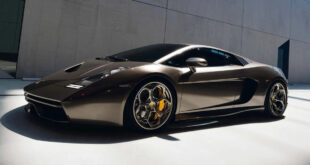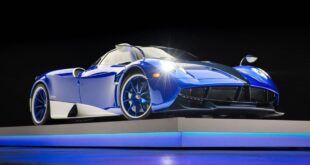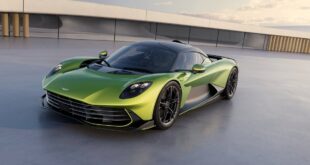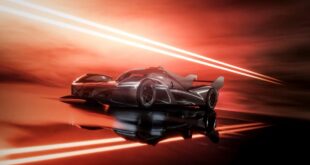You might not be familiar with Keating Supercars TKR, but it was once the fastest hypercar in the world, although without official recognition.
The Keating KTR’s story is an extraordinary tale of a British engineer and businessman who decided to start a supercar company and produce the fastest car in the world. The Keating brand is a fairly recognizable organization for those familiar with the automotive world in the 2000s.
Nonetheless, the lack of information about the TKR is quite surprising. Don’t worry though, we have been hard at work so you can enjoy another addition to the Unknown Supercars series.
History
Barabus Sportscar Ltd was established in 2006 by an Automobile Engineering student from the University of Bolton in the UK.
The student in question, Anthony Keating, had a strong passion for cars — fast cars, to be exact. Anthony was born with this passion; as a young boy, he would help maintain the vehicles on his parent’s farmland. Growing up, he was involved heavily in the life of his racing driver sibling. Driven by the ever-evolving passion within, Anthony set up a power plant engineering company in 1990.
After experiencing success in his business ventures, Anthony decided to form a supercar company, going by the name of Barabus, later renaming the company Keating Supercars. The brand launched its first car, the TKR, in 2006 at the British Motorshow.
Various Engine Configurations
Beneath that exotic body, the TKR was no slouch. The supercar came with different exciting engine options, with the base engine being either a 6.0-liter or a 7.0-liter all-aluminum V8 General Motors LS. The Corvette engines could be naturally aspirated, twin-turbocharged, or even supercharged. These options resulted in power outputs from 500 HP all the way up to 1,800 HP. No need to say, the different induction methods had an enormous impact on power output. The base versions were naturally aspirated, mid-range models had superchargers, and the most powerful variants had twin-turbocharged engines.
In its most powerful iteration, the TKR would get to 60 mph in less than two seconds and eventually reach a claimed top speed of 270 mph. Such impressive figures don’t really come as a surprise as the company’s founder was very clear about making the TKR the fastest car in the world from the beginning. Keep in mind that, at the time the TKR launched, several other hypercars were also gunning for the title. The SSC Ultimate Aero TT already held the record after it had clocked a top speed of around 257 mph.
Surprisingly, and despite having a plethora of engine options, the TKR had just one transmission choice — a 5-speed longitudinally-mounted Porsche manual gearbox sending the power to the rear wheels.
Two Chassis Options And Luxurious Interior
There were also multiple chassis options available. Keating designed the TKR with either a steel space-frame structure or an optional carbon-fiber structure, with the latter translating to considerable weight-savings. The brand could offer such a high number of customization since it planned to produce the TKR in very small numbers.
Furthermore, the TKR features luxury elements that one would not expect to find on such a performance-focused machine. Keating offered some of the finest quality leather and suedes options for customers to choose from. The TKR was also one of the first cars with a camera that projected the image behind onto the rear-view mirror.
Styling Features
Judging at the pictures, it doesn’t take long to realize that the Keating TKR looked quite ahead of its time. Being the brainchild of an engineer and businessman, the brand left no stone unturned while designing its first-ever model.
The design was initially inspired by the Saleen S7 and the Pagani Zonda. At first glance, we can easily see certain similarities with the Saleen’s fascia, while the rear-end seems to be a loose interpretation of the Zonda. The boxy mid-mounted multiple exhaust pipes are a unique touch, though.
The TKR features a sleek body that significantly contributes to reducing its overall drag coefficient. The smooth, flowing lines channel the oncoming airflow over the body as efficiently as possible. Various factors, such as the low drag coefficient, sophisticated aerodynamics, and the car’s lightweight nature, made way for it to have a real shot at being the fastest car in the world.
All About Advanced Aerodynamics
Keating gave a lot of importance to aerodynamics when designing the TKR. Complex structures efficiently manage airflow through the car’s underbody, increasing downforce and keeping it stable even at high speeds. The front and rear bumpers also have dedicated components that help efficiently distributing the air over the outer skin of the TKR.
To keep the massive fire-breathing mid-rear mounted engine cool, the TKR has various strategically-placed air intakes. Starting with the front fascia, the car has a long sweeping hood with huge fenders on either side. The hood has a letter-box shaped opening that draws air into the vehicle. Eagle-eyed readers will have already noticed that the front bumper and fenders have no panel-joint lines between them, indicating that they are a single unit.
The middle portion of the TKR is the most interesting of all. It houses the vehicle’s occupants with a roof-scoop sucking air in and sending it to the engine. There are additional air-intake slats behind each door, responsible for providing an uninterrupted air supply to the two intercoolers.
The rear-end of the TKR features a glass engine cover, allowing bystanders to soak in the mesmerizing beauty of the glorious V8 engine. Owners can choose to have an enormous wing, but doing so also affects the car’s top speed.
Similar to the chassis, the body panels also come in two variants — fiberglass or carbon fiber.
TKR’s Record Attempt
As mentioned earlier, the Keating TKR was released in 2006 with the sole aim of being the fastest car in the world. So naturally, a year after the car’s public debut, Anthony Keating brought a 15-member team of engineers to California to try and break the record.
Towards the end of 2009, an initial run resulted in a top speed of 260.1 mph on California’s Salt Lake Flats. The TKR went 3 mph faster than the SSC Ultimate Aero TT and 7 mph faster than the fabled Bugatti Veyron.
The TKR obviously featured the most powerful engine available for the record run — a mid-rear mounted 7.0-liter twin-turbocharged V8 engine producing 1,800 horsepower. Moreover, Keating tweaked the car to have the lowest amount of drag possible and completely removed the large rear wing.
Even though the TKR went faster than the previous record-holder, the speed could not be officially recognized. Each car had to do two high-speed runs in opposite directions for the record to be considered. However, the TKR only did one.
There were plans for the Keating Supercars team to return and try another record attempt, this time complying with the regulations. Unfortunately, this run could never occur due to someone crashing the car shortly after.
Last Words
We could not access information about how many Keating TKRs were sold or even produced, but we do know that the brand projected to sell 300-400 cars worldwide at an asking price of £360,000 a pop. Obviously, if Keating had managed to sell that many cars, we would know a lot more about them. Also, if other cars were available, Keating should have been able to attempt another record run. Consequently, it leads us to assume that it only made a handful.
Keating Supercars is still an active company with a few products on sale. The brand’s latest car is the Keating Berus. Just like the TKR, Berus customers can choose between different induction methods to the LS V8 engine. Power outputs range from 525 HP and go all the way up to 750 HP.
Unfortunately, none of them are as cool as the original KTR.
More details on Keating Supercars’ website.
Detailed Specs
| Type | Series Production Car |
| Production Years | 2006 – 2010 |
| Released at | 2006 British Motor Show |
| Built at | Colonella, Italy |
| Body Stylist | Barabus Sports Cars LTD |
| Production | 400 |
| Price $ | $ 660,000 |
| Engine | Nelson Racing V8 |
| Aspiration | Twin-Turbo |
| Displacement | 6997 cc / 427 in³ |
| Power | 749.4 kw / 1005 bhp @ 6800 rpm |
| Specific 0utput | 143.63 bhp per liter |
| Redline | 7500 |
| Top Speed | ~418.34 kph / 260 mph |


